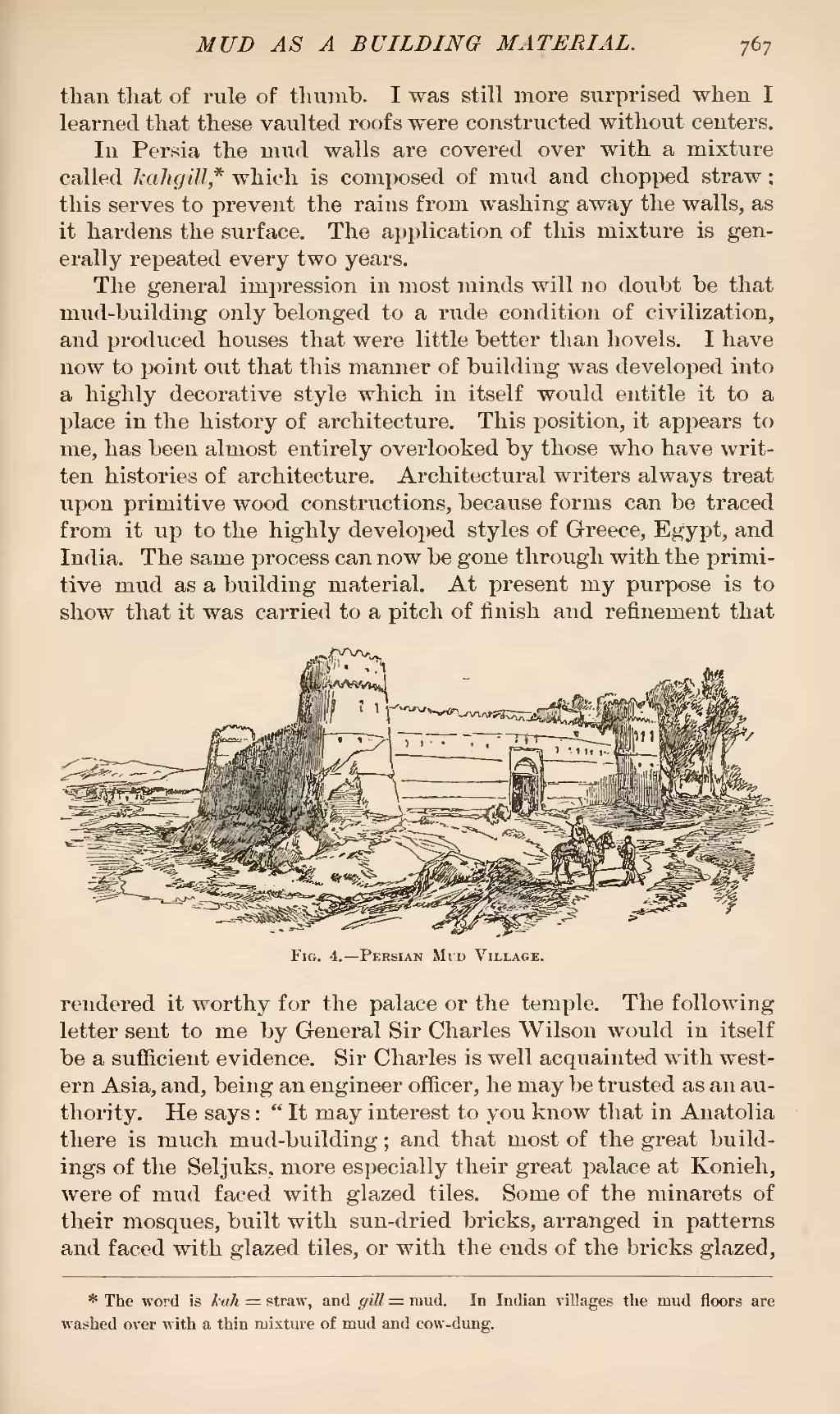than that of rule of thumb. I was still more surprised when I learned that these vaulted roofs were constructed without centers.
In Persia the mud walls are covered over with a mixture called kahgill,[1] which is composed of mud and chopped straw; this serves to prevent the rains from washing away the walls, as it hardens the surface. The application of this mixture is generally repeated every two years.
The general impression in most minds will no doubt be that mud-building only belonged to a rude condition of civilization, and produced houses that were little better than hovels. I have now to point out that this manner of building was developed into a highly decorative style which in itself would entitle it to a place in the history of architecture. This position, it appears to me, has been almost entirely overlooked by those who have written histories of architecture. Architectural writers always treat upon primitive wood constructions, because forms can be traced from it up to the highly developed styles of Greece, Egypt, and India. The same process can now be gone through with the primitive mud as a building material. At present my purpose is to show that it was carried to a pitch of finish and refinement that

Fig. 4.—Persian Mid Village.
rendered it worthy for the palace or the temple. The following letter sent to me by General Sir Charles Wilson would in itself be a sufficient evidence. Sir Charles is well acquainted with western Asia, and, being an engineer officer, he may be trusted as an authority. He says: "It may interest to you know that in Anatolia there is much mud-building; and that most of the great buildings of the Seljuks, more especially their great palace at Konieh, were of mud faced with glazed tiles. Some of the minarets of their mosques, built with sun-dried bricks, arranged in patterns and faced with glazed tiles, or with the ends of the bricks glazed,
- ↑ The word is kah = straw, and gill = mud. In Indian villages the mud floors are washed over with a thin mixture of mud and cow-dung.
